
Stuffing and Linking Sausage
Most grinders, whether manual or electric, will come with sausage stuffing attachments. These are adequate to use, but are more labor intensive than a manual piston stuffer. Using these attachments can require the use of two people; one person to feed the meat through the grinder, and another person to control the amount of meat being stuffed in the casings. This can be done solo, but will take some patience and practice.
If using your grinder’s stuffing attachments, the cutting blade and die are the only pieces that need to be removed. A spacer is used where the cutting blade would be, then the sausage stuffing tube is attached.
The most efficient sausage stuffing machine for home use is a manual piston stuffer. These are much faster and only require one person to operate. They are quite simple to use; the sausage is loaded into the cylinder, then the hand crank will force the piston down the cylinder, pushing the sausage through the stuffing tube.
Most grinders and sausage stuffers come with several stuffing tube sizes; usually 1/2″, 3/4″, and 1″. The smallest tube is typically for sausages like breakfast links. I prefer to use the 3/4″ tube for most fresh sausages, but it’s up to you how wide you want your links.
Now you will need to feed the casing onto the stuffing tube. Your casings should have been soaked in cool water for at least 30 minutes prior to stuffing. A generous amount of water should be flushed through the casings before attempting to feed them onto the tube; this can be done by holding them under your sink’s faucet. It is also a good idea to lubricate your stuffing tube (…there’s just no way to say that without sounding dirty…) with a good deal of water, which will help the casing to go on easier.
Be sure to leave about 2″- 4″ of casing at the end of the tube; this is enough room to ensure that all of the sausage makes it into the casing, and also to tie a knot when you’re ready to link.
The first few times you stuff sausage, it will feel awkward. You have to figure out how fast the machine is operating and how to control the flow of sausage into the casing. The meat should fill the casings, but if you don’t move the stuffed casings off the tube fast enough, the meat will overstuff the casing, causing it to bust open. If your sausage is too loose and hasn’t filled up some parts of the casing, you can squeeze the meat through with your hand until the casing is full.
When you’re done, tie both ends of the casing. To make links, measure how long you want your sausages (usually about 6 inches), pinch the sausage at the desired length, and twist in a clockwise motion. Measure and pinch again, this time twisting in a counterclockwise motion. Repeat this process until you’ve linked the whole thing.
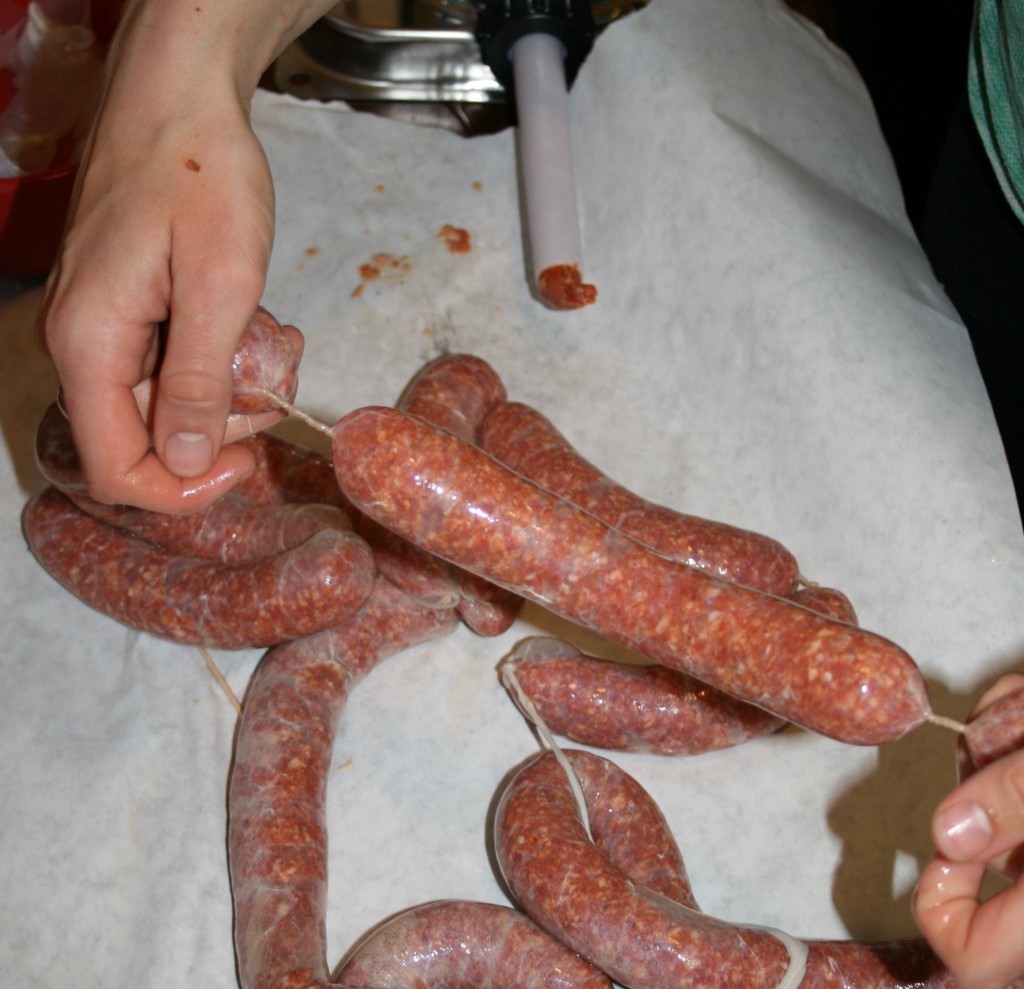 It is common for the finished product to have some air pockets. As you get better at stuffing sausage you should have less of these, but even the most experienced sausage maker may have a few. Take a toothpick and puncture the air pockets. Even if the air pockets are all relatively small, I still poke each sausage 2-3 times to let air escape. These tiny pricks in the casing will reseal as the sausage is cooked so no juices are lost.
It is common for the finished product to have some air pockets. As you get better at stuffing sausage you should have less of these, but even the most experienced sausage maker may have a few. Take a toothpick and puncture the air pockets. Even if the air pockets are all relatively small, I still poke each sausage 2-3 times to let air escape. These tiny pricks in the casing will reseal as the sausage is cooked so no juices are lost.
And that’s that. If you are going to hang your sausages to dry out (in preparation for smoking) you shouldn’t cut the links yet. If not, cut the links with a knife or a pair of scissors.
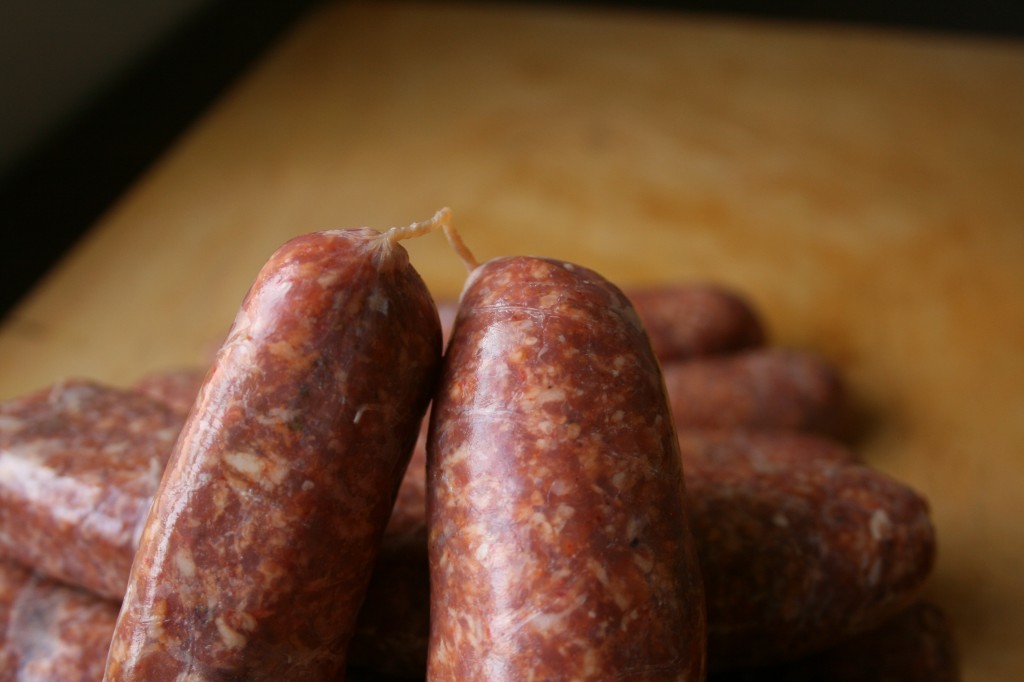
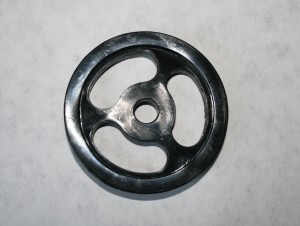
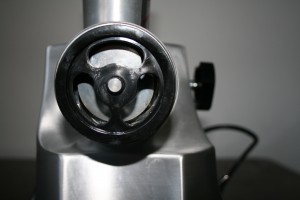
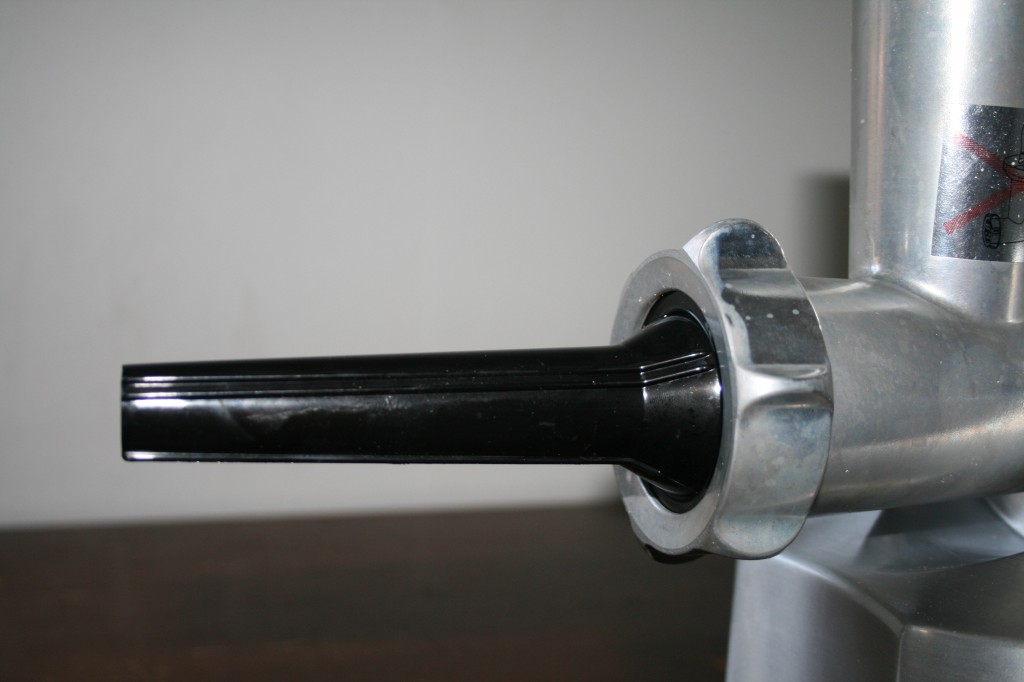
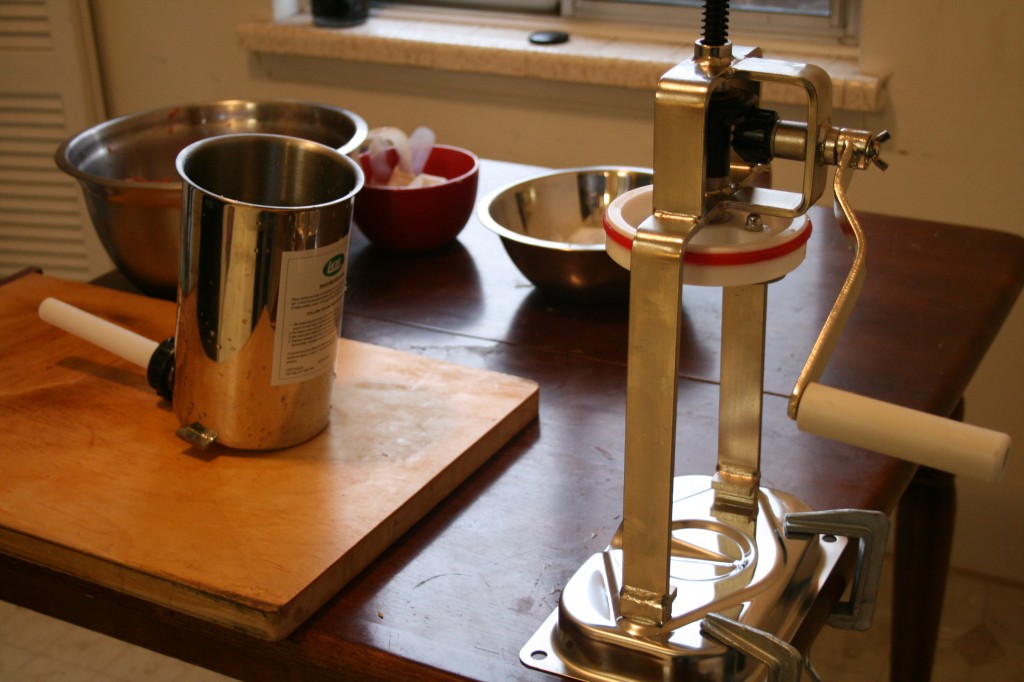
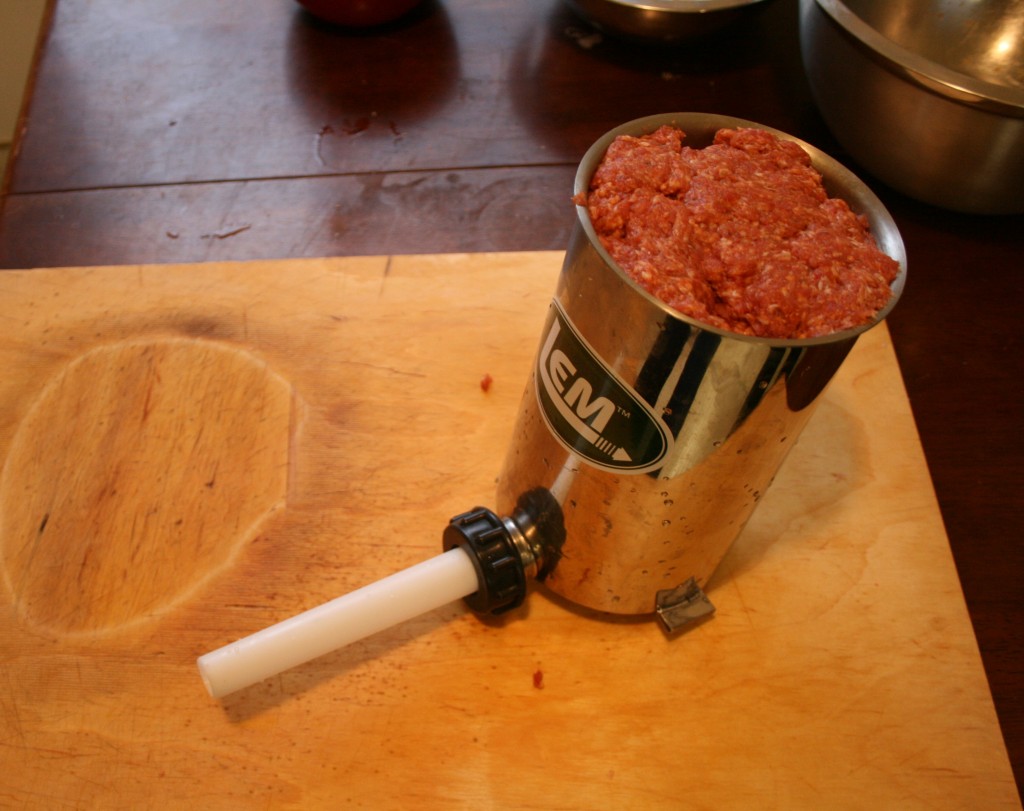
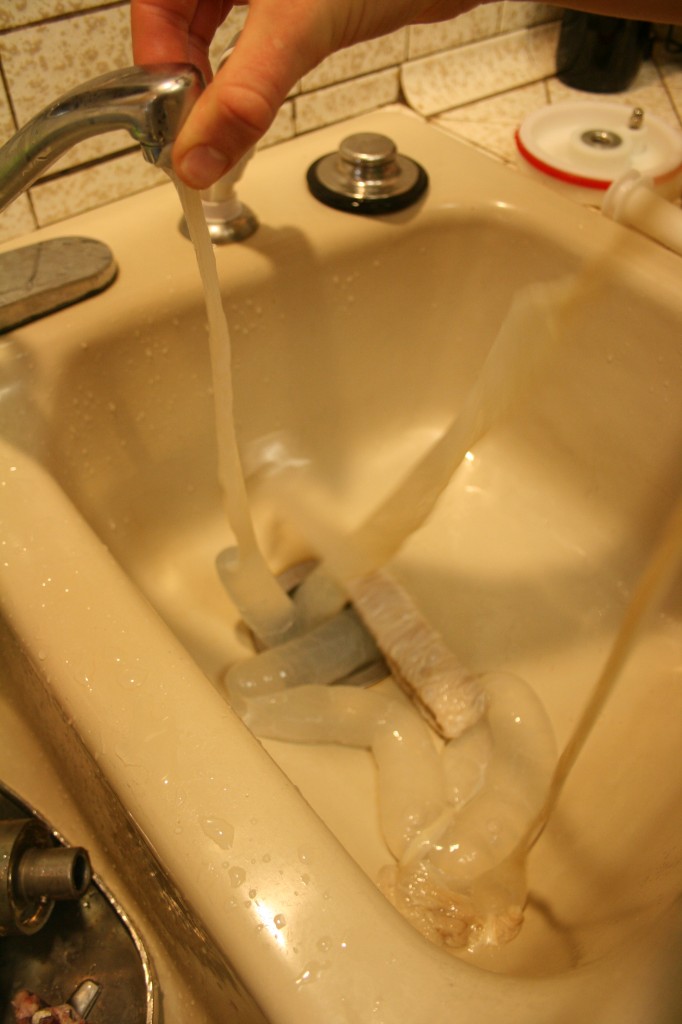

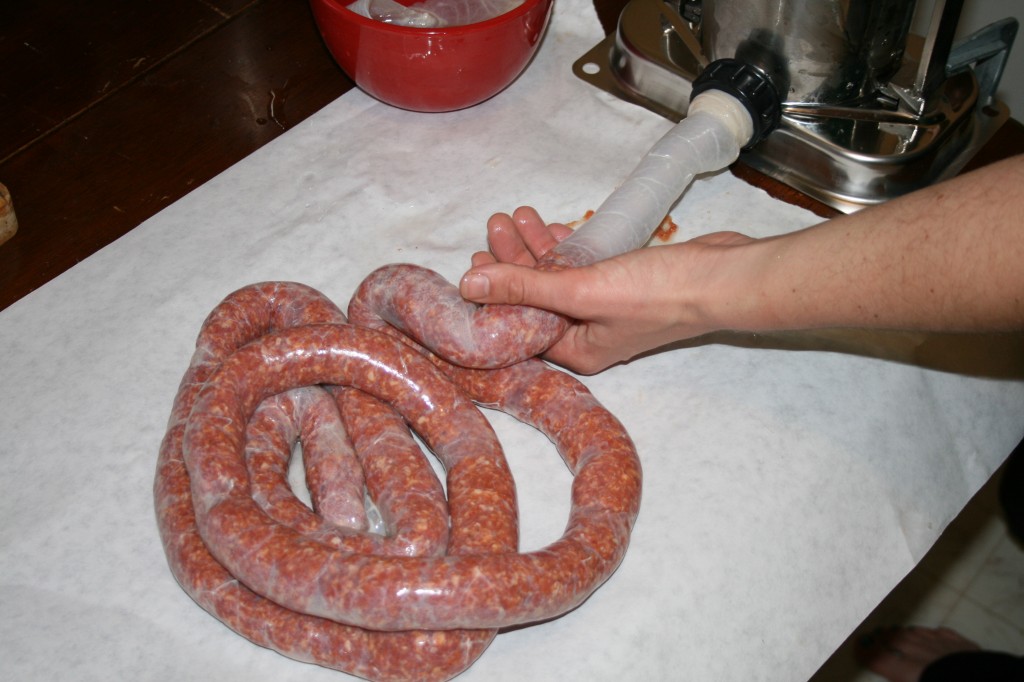
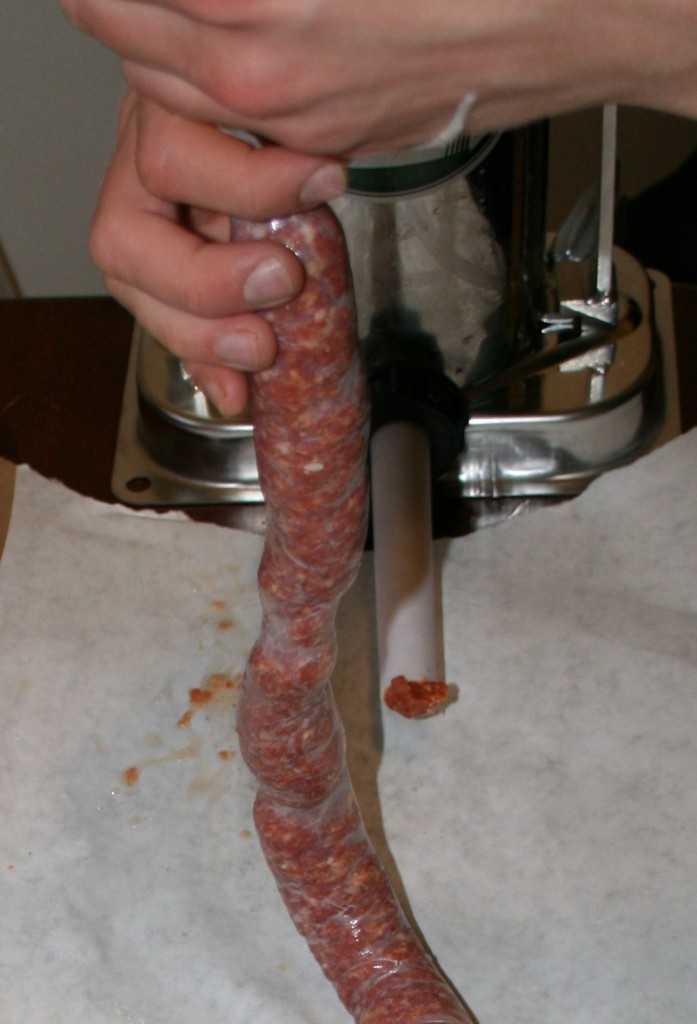
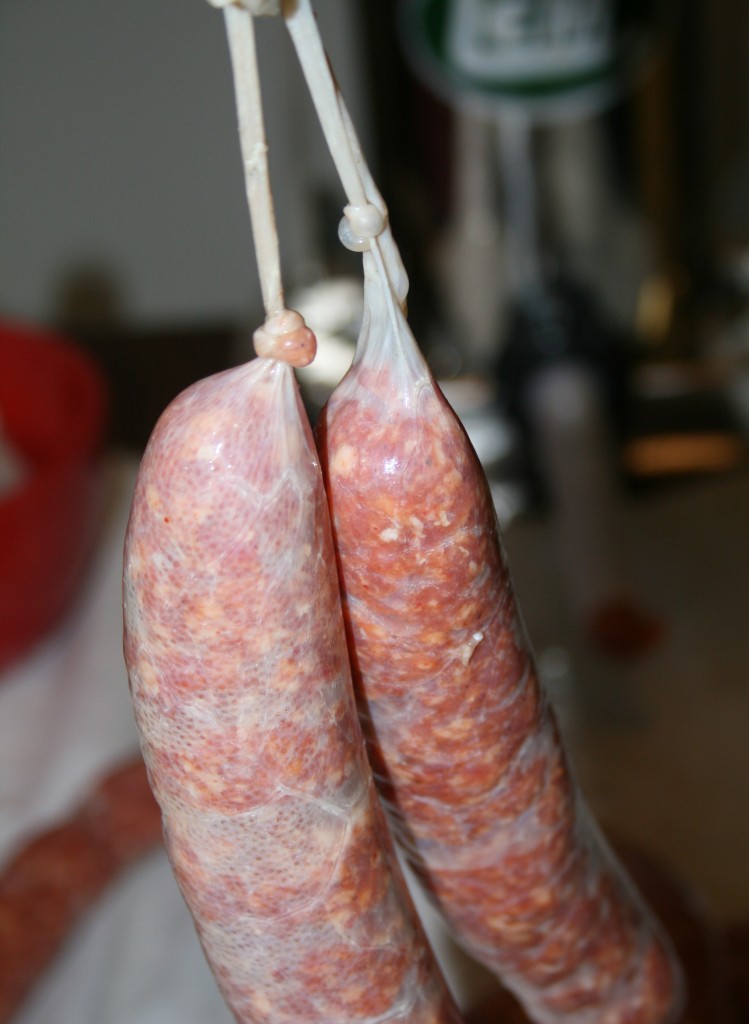
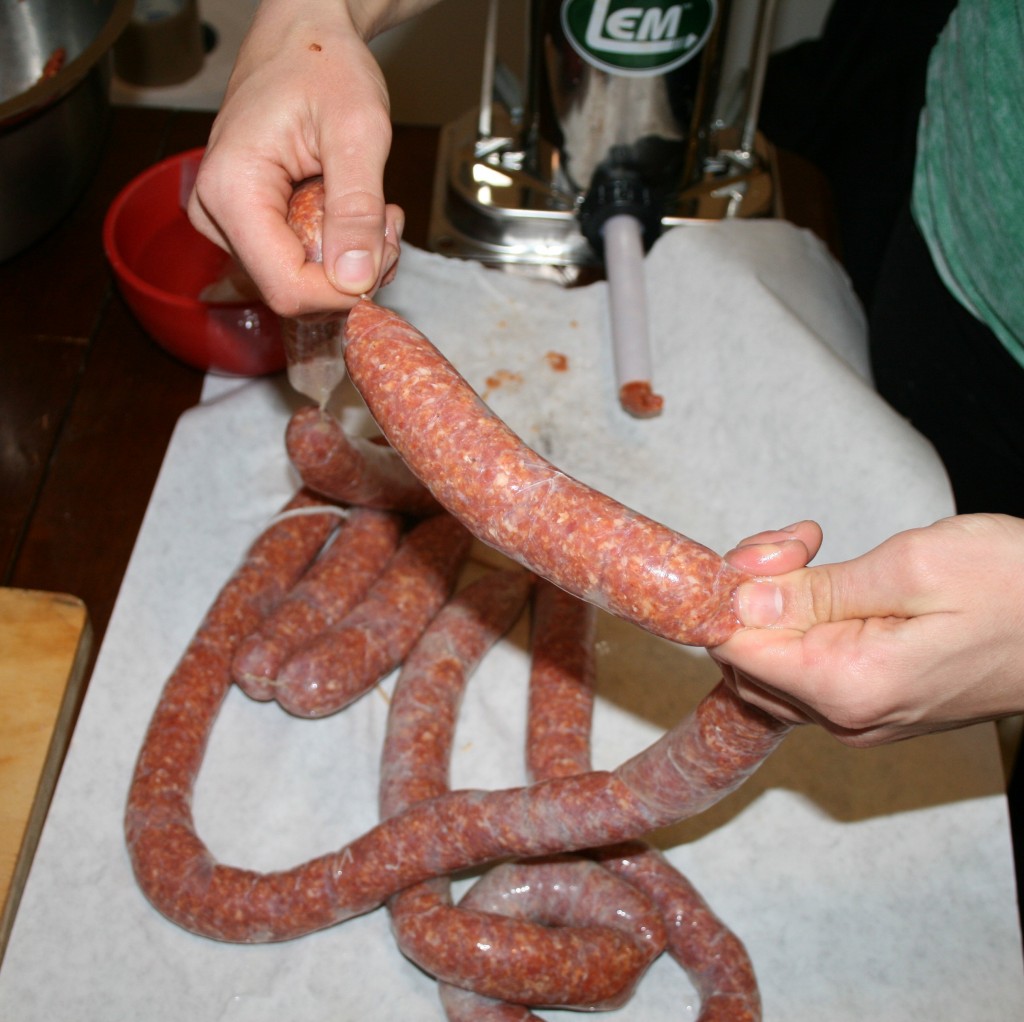
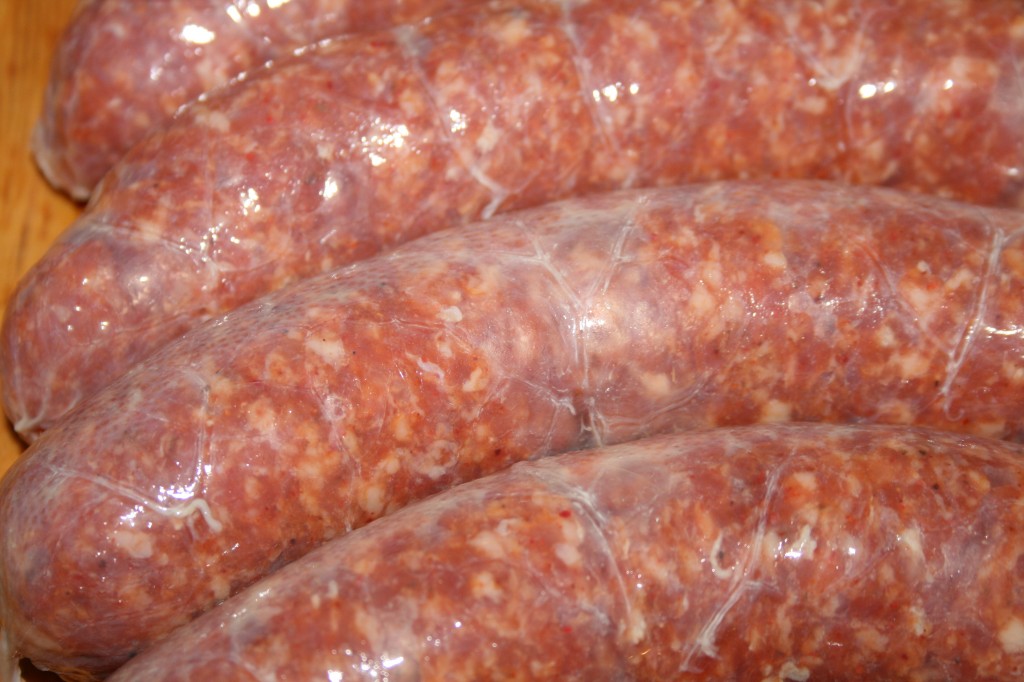
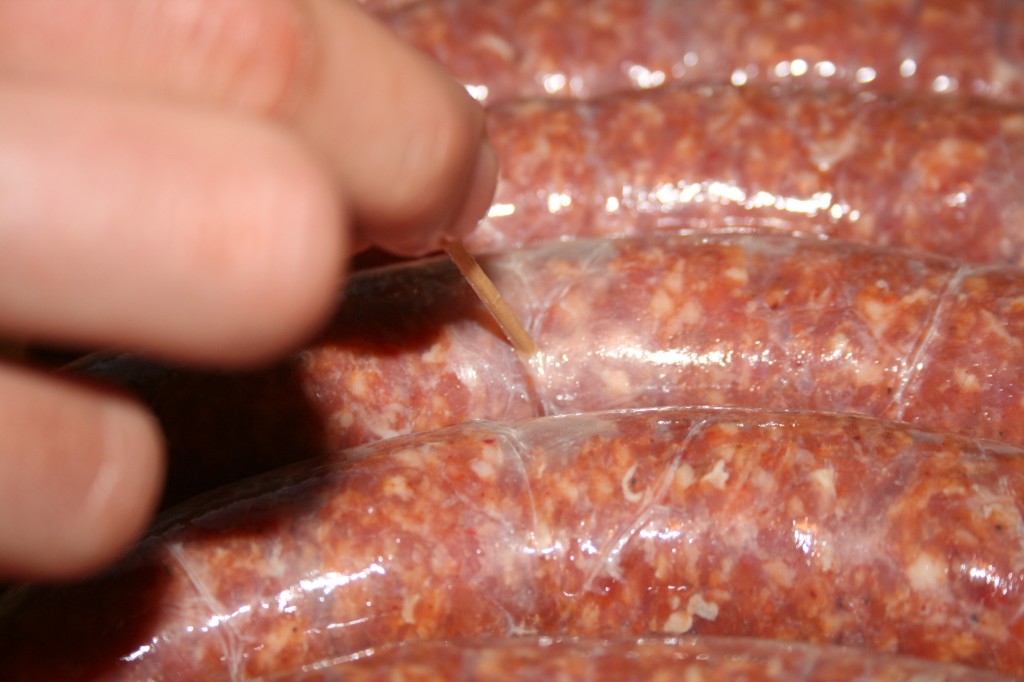
One thought on “Stuffing and Linking Sausage”
Comments are closed.